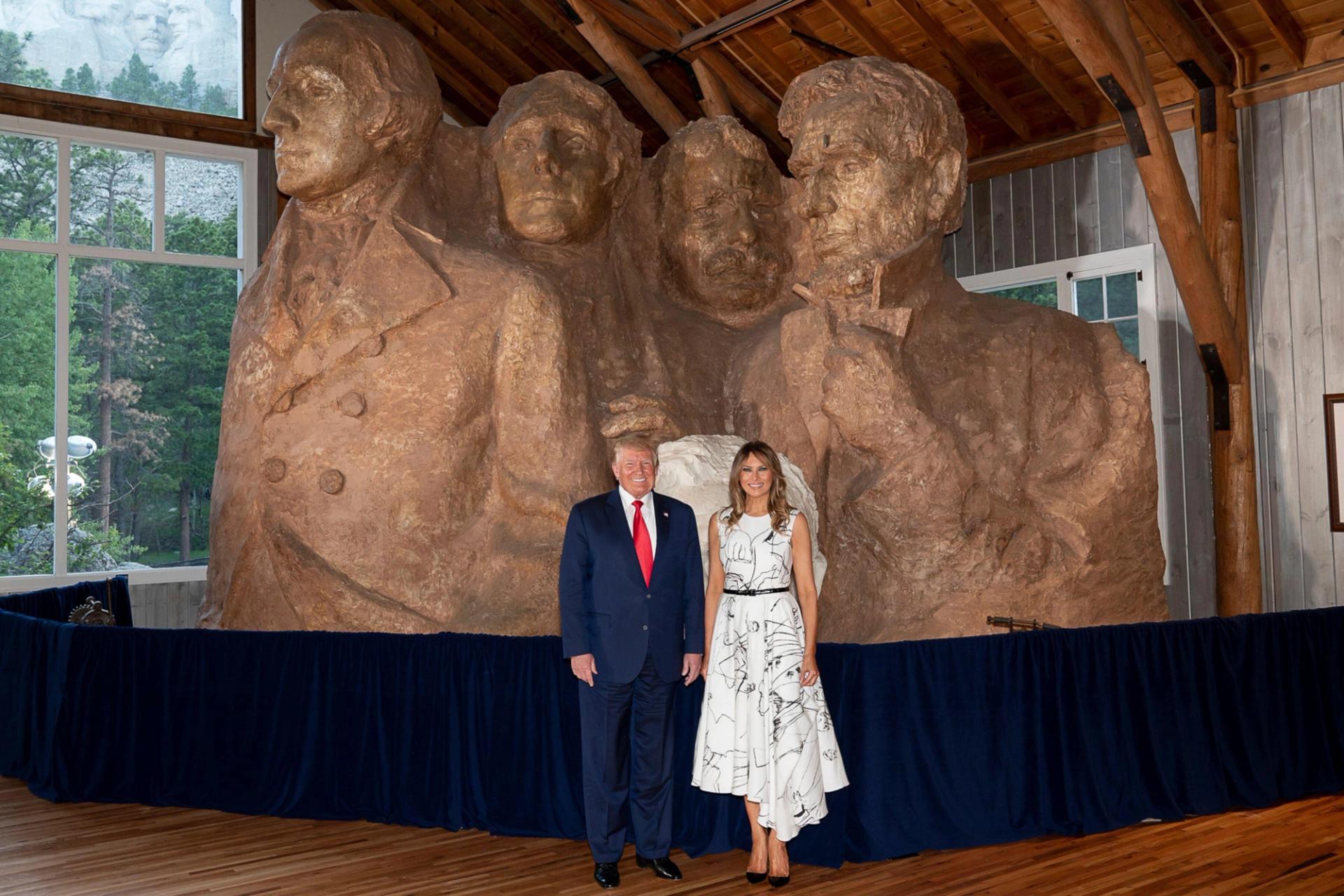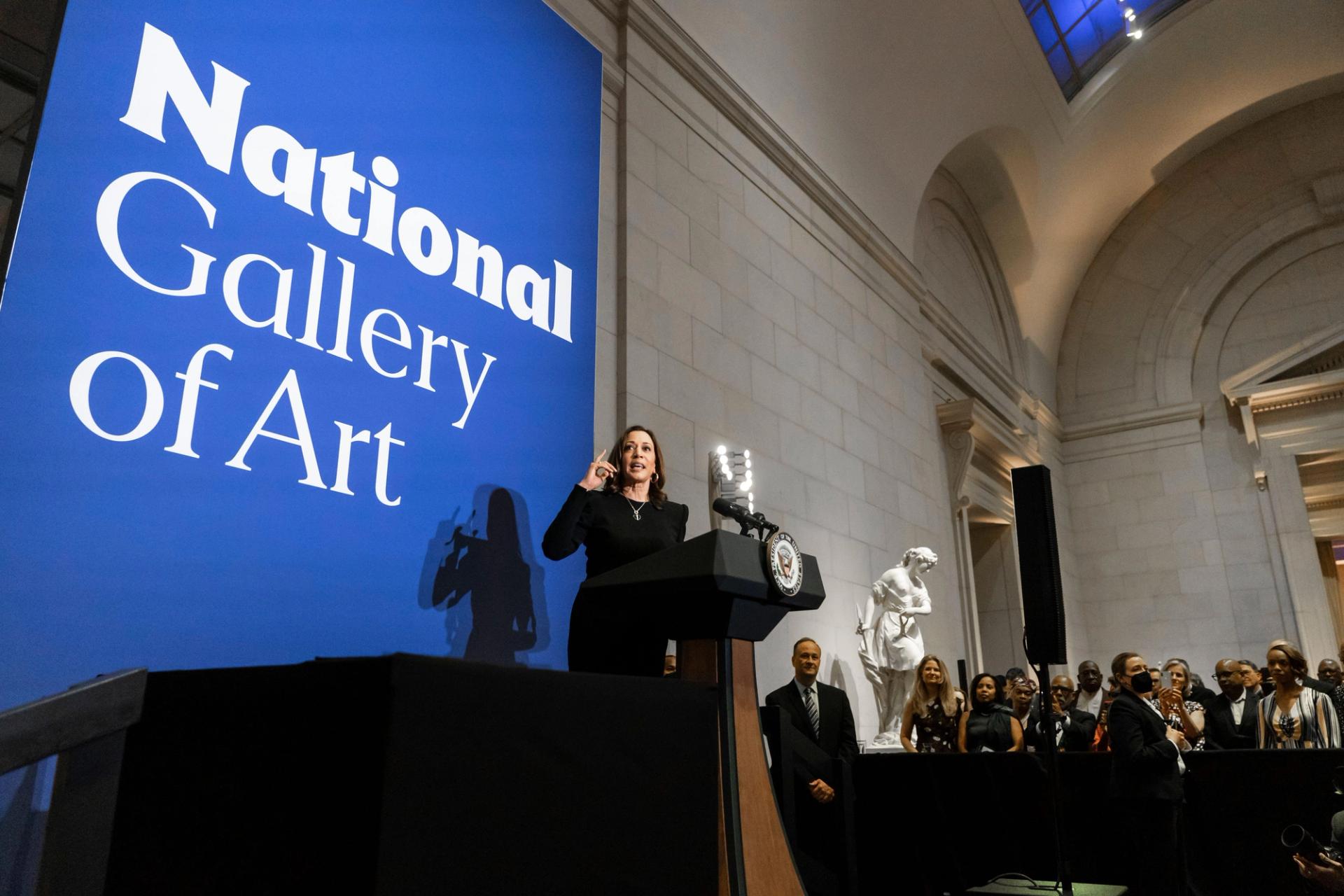With a full menu of front-burner issues to contend with—the economy, climate change, reproductive rights, wars in Ukraine and the Middle East, immigration on the southern border and gun violence, to name just a few—the next US president’s administration is unlikely to immediately focus on how to support the arts. Still, the federal government does play an important role in helping arts organisations and institutions, as well as individual artists, through direct financial support (via the National Endowments for the Arts and Humanities, and the Institute of Museum and Library Services), commissions (through the General Services Administration), underwriting traveling exhibitions (the Arts and Artifacts Indemnity Program), employment (the Department of Defense, the US Geological Survey and others), artist residencies (with the National Parks Service), international cultural exchanges (via the Department of State) and more. Changes to the federal tax code, as well as improvements or downturns in the state of the national economy, also may affect the willingness of individuals to buy art or donate money to art organisations.
The policies for the arts that the next administration has in store will be of great interest for those close 4.9 million workers employed in the nation’s literary, performing and visual art industries, according to a 2021 study by the NEA and the US Bureau of Labor Statistics.The presidential candidates have their own, often-differing ideas.
Trump’s arts playbook
Former president Donald Trump sought in his last year in office to abolish the NEA, writing it off as a waste of federal dollars when other domestic needs were greater. Although he was not successful in making that a reality, it may be assumed that he will try again if re-elected. It is not known if Trump would pare down federal government involvement in the arts in other ways, although during his previous administration, no director was appointed to the State Department’s Art in Embassies programme, which places art by American artists in US embassies around the world. The result was that the programme went on a six-year hiatus.
During his final days in office, then-president Trump proposed the creation of a National Garden of American Heroes, which was to include statues of notable Founding Fathers, activists, political figures, businesspeople, athletes, celebrities and pop culture icons. No specific site was identified for this sculpture garden.

Then-president Donald Trump and First Lady Melania Trump pose together during a July 2020 tour of the Sculptor Studio at Mount Rushmore National Memorial in Keystone, South Dakota White House Photo / Alamy Stock Photo
Support for the arts is never a signature priority for a US presidential candidate or party. The official 2024 Republican Party Platform makes no mention of the NEA or the arts at all, although there is a call to “restore American beauty. Republicans will promote beauty in Public Architecture and preserve our Natural Treasures. We will build cherished symbols of our Nation, and restore genuine Conservation efforts.”
The Heritage Foundation, a major conservative think tank that is not part of the Trump for President campaign but whose priorities are shaped by many veterans of his first administration and have a strong influence on many of the advisors around Trump’s current campaign, released its own blueprint for a second Trump administration earlier this year. The 887-page document, Mandate for Leadership: The Conservative Promise, makes no mention of the NEA but does advocate for the abolition of the cabinet-level Department of Education.
Harris’s culture cachet
The 2024 Democratic Party platform notes the commitment of President Biden to the arts, having “reestablished the President’s Committee on the Arts and the Humanities and signed an Executive Order to make art more accessible to people from underserved communities” and that the Harris Administration “will fund the National Endowment for the Arts, the National Endowment for the Humanities, and art and music education in public schools”.
The personal involvement of the candidates in the arts—as audience members, collectors, donors or board members of cultural institutions—ranges widely. In 1996, for instance, Kamala Harris joined the board of trustees of the San Francisco Museum of Modern Art, remaining until 2011, the year she took office as California attorney general. One of the financial contributors to her successful 2003 race to become San Francisco’s district attorney was the board’s chair at the time, Elaine McKeon.
Both Harris and her husband Doug Emhoff are jazz fans—he to the degree that his two children from his first marriage are named Ella and Cole, for singer Ella Fitzgerald and musician John Coltrane. She has been a board member of San Francisco Jazz and was involved with the San Francisco Symphony. The decision to take part in these cultural institutions may have been influenced by her one-time boyfriend and former Los Angeles mayor, Willie Brown, who wrote in his 2008 autobiography Basic Brown: My Life and Our Times that “being able to cross over into the white community is essential for any black, female or male, to succeed as a political figure. I suggest that black women lay the groundwork by looking to become active on the boards of social, cultural and charitable institutions like symphonies, museums and hospitals.”

Vice President Kamala Harris speaks at the opening gala of the exhibition Afro-Atlantic Histories at the National Gallery of Art in Washington, DC in April 2022 Joshua Roberts / Pool via CNP / MediaPunch Inc / Alamy Stock Photo
Her running mate, Tim Walz, the governor of Minnesota since 2019, is described by Sarah Fossen, executive director of the arts organisation Minnesota Citizens for the Arts, as “one of the most supportive arts politicians you’ve ever met”. He promoted tax credits to encourage filmmakers to produce movies in the state in 2023, she says, and in May of this year signed into law a so-called “Taylor Swift bill” that requires ticket sellers to list the full price, including fees, on their websites and bans speculative ticketing, where tickets are sold before they are actually made available. Additionally, as governor Walz has fought back efforts to reallocate funds raised through a portion of the state sales tax that are used to support the arts, clean water and parks and trails (a 2008 law known as the “Legacy Amendment”) for other purposes.
Minnesota has a two-year budget, and Sue Gens, executive director of the Minnesota State Arts Board—the arts and culture funding arm of the state—says that the agency’s 2018-19 budget, passed before Walz became governor, was $58.1m. The 2024-25 budget is $98m. She says Walz “has been very supportive of our agency and our budget”.
The governor’s wife, Gwen Walz, whom he met when they both taught at the same Minnesota high school, has a particular interest in music, regularly attending performances of the Minnesota Orchestra and keeping a Steinway piano at the governor’s residence that she plays daily.
Republican vice-presidential candidate J.D. Vance’s wife, Usha Vance, has been a member of the board of directors of the Cincinnati Symphony Orchestra since 2022.
Hanging in the halls of power
Former president Trump has not distinguished himself as an art collector, although he and his wife Melania attended the annual Met Gala fundraiser numerous times before he became president. Trump appears to like the work of Pierre-Auguste Renoir, owning reproductions of at least two of the artist’s paintings, 1874’s The Theatre Box and 1881’s Two Sisters (on the Terrace), which are displayed at New York’s Trump Tower. (The originals of The Theatre Box and Two Sisters are in the collections of London’s Courtauld Art Institute and the Art Institute of Chicago, respectively.)
At his Mar-a-Lago resort and residence in Palm Beach, Florida, the former president displays original paintings by singer Tony Bennett. Trump, however, has shown greater interest in collecting wristwatches and luxury automobiles, owning high-end models of a Mercedes-Benz, two Rolls-Royces, a Lamborghini, a Tesla and a Cadillac. However, he cannot drive these vehicles off his properties, since an act of Congress (the Former Presidents Act of 1958) prohibits former presidents from driving on public roads.
The Art Newspaper attempted to contact the campaigns of third-party candidates seeking the nation’s highest office. Libertarian candidate Chase Oliver has not published or even developed an arts policy that his administration would pursue, according to his media director, Amber Howell. He does not appear to be much in the market for art or a devotee of the performing arts. However, Howell says, Oliver is “a really, really, really big Star Trek fan” and collects memorabilia from the 1960s television show. “His living room is covered with photographs of William Shatner.”
Green Party candidate Jill Stein and independent presidential candidate Cornell West have not announced any arts and culture policies, and representatives from their respective campaigns did not respond to questions about their own tastes and participation in the arts.


